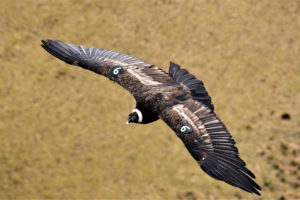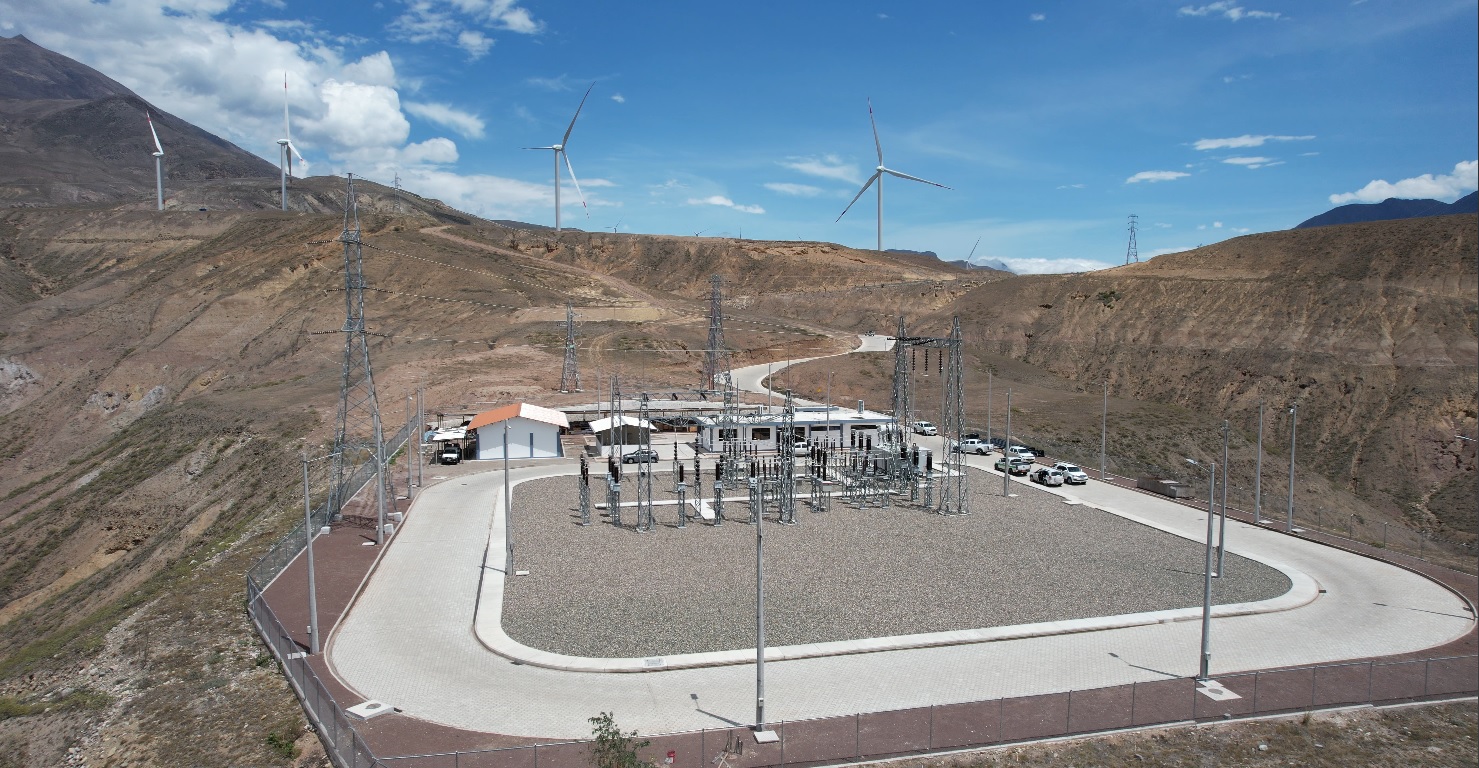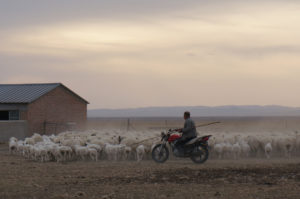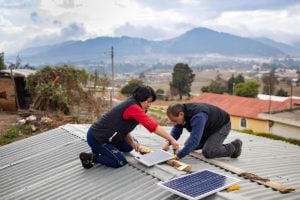Watching the Andean condor (Vultur gryphus) fly is a unique spectacle. One of the largest birds in the world, the majestic animal can reach weights of up to 15 kilograms and have a wingspan of over 3 metres. Using wind currents to stay aloft and travel great distances, Andean condors have been sighted resting and feeding in cliffs off the Pacific coasts of Chile and Peru, more than 100 kilometres from their inland nests. Their flights have also been recorded at heights of nearly 7,000 metres.
But even these characteristics are not always enough to protect Andean condors. In recent years, the species has been hit by multiple threats, including habitat loss, and ranchers leaving poison on carrion in attempts to protect their livestock. Alongside these worrying developments, condor flights are also said to have been increasingly disrupted by a growing, unforeseen threat: wind energy projects.
Fabricio Narváez, founding partner and researcher for the Andean Condor Foundation (FCA), based in Ecuador’s capital city Quito, explains that there are two main threats: the “barrier effect”, in which wind turbines act as obstacles to a bird’s path; and collisions with the blades.
It is estimated that Andean condors can live to over 50 years in the wild and around 80 years in captivity. But the bird – a national symbol of Chile, Colombia, Peru, Bolivia and Ecuador – has a very low reproduction rate, laying one egg every two to three years. The International Union for the Conservation of Nature (IUCN) classifies the condor as a vulnerable species, with just some 6,700 specimens recorded in South America. The condor population is thought to have declined by between 30% and 49% in recent decades, and the organisation notes that there are only 150 left in Ecuador, where it is considered endangered.
Fighting in the air
The FCA estimates that in the coming years, 20 wind farms will be built in the Andean condor’s Ecuadorian habitats. The most recent one to be inaugurated was Minas de Huascachaca, the country’s largest wind farm, in operation since March 2023. Located in Saraguro, in the province of Loja and the southern Ecuadorian highlands, the facility has a capacity of 50 megawatts and supplies electricity to 90,000 households. However, since its inception in 2017, its works have been fraught with controversy.
A 2022 investigation by journalists for Ecuadorian platform Periodismo de Investigación revealed irregularities in the contracting and subcontracting processes for the farm, namely overpricing and subdivision of contracts, carried out by state-owned Elecaustro and Chinese company Dongfang Electric. Despite the Comptroller General’s Office having presented a report on these irregularities, the project is now in operation and will be contracted to the Chinese company for a further two years.
In addition to these allegations, FCA points to the project’s environmental impact studies not making any mention of the emblematic and endangered condor, which the organisation says proves they have been ignored. In southern Ecuador, where the Huascachaca farm is located, 28 condors have been counted – a number that, while seemingly insignificant, represents a quarter of the country’s total population of the species.
Minas de Huascachaca is one of six wind power projects that has been granted an environmental licence, and one of four that are operational. Its environmental impact study does not mention the Andean condor in its list of 30 bird species identified in the area, nor in any of the 490 pages of the study. It also states that “none of the fauna is endangered”.
The FCA’s Fabricio Narváez says he cannot fathom these assertions. For more than 10 years, he has been monitoring the areas of importance for these birds in Ecuador. In 2020, he learned that 14 large wind turbines would be built in the south of the country within areas said to be of “priority” for protecting the condor, but which are not yet legally protected. He also says he discovered they would be placed in front of Andean condor roosts and a nest.
FCA specialists began to approach the ministries involved in this project at the end of 2021 to learn more about the measures targeting the species.
In response to the organisation’s requests for information, the Ministry of Environment, Water and Ecological Transition (MAATE) admitted, in several official letters seen by Diálogo Chino, that in the areas of direct and indirect influence of the project “the impacts against wildlife and specifically against the Andean condor were not considered; measures for prevention, mitigation and control of impacts were not included.”
Christian Piedra Lazo, general manager of Elecaustro told Diálogo Chino that, in the first wildlife assessment, the presence of the Andean condor was not identified, and that per MAATE’s request, they will update their environmental impact plan to include it. However, he said that there is “no deadline” for the delivery of the final document, and that in the meantime, “we can continue operating”.
Diálogo Chino contacted the Ministry of Energy and Mines and Dongfang for interviews but received no response by time of press.
Calls for stronger measures
In an email response to Diálogo Chino, MAATE said that other possible impacts of the wind farms include noise pollution and disturbance of wildlife habitat. Both, in turn, lead to effects including isolation and displacement of animal populations.
Héctor Cadena, a researcher at Ecuador’s National Biodiversity Institute (Inabio), says that mitigation measures could be taken to reduce the impacts, such as painting the blades in striking colours so that they are visible to birds. He adds that MAATE should specify the mitigation techniques necessary for the well-being of the local fauna and carry out constant monitoring of wind farms’ effects on them.
According to information from MAATE, the Huascachaca project should carry out two wildlife surveys a year, and constant monitoring of local wildlife to track the impacts of this work – both of which were agreed upon when the concession contract was signed. However, Cadena explains that, according to current MAATE regulations, it is the companies themselves who carry out these wildlife surveys and monitor the impacts, which means that “they are judge and jury”.
Leonardo Ordoñez, a researcher at the Technical University of Loja (UTPL), believes that there are a number of shortcomings in this type of study – namely, that there is no documentation of the original fauna found in these sites, as well as the fact that it allows for significant variations between different companies. He believes that a “minimum standard” should be developed.
MAATE has so far not recorded any impacts from wind power infrastructure on wildlife in mainland Ecuador. But in Villonaco, another canton of Loja, Ordoñez says he found a dead black-chested buzzard-eagle in 2020. The canton is the site of its namesake Villonaco wind farm, which began operating in 2013 and was the first wind farm on the mainland. In this area, endangered birds, including birds of prey such as the peregrine falcon, fly high up to look for food; Ordoñez says he saw a propeller break the eagle’s back, causing it to fall to its death. He adds that he has also seen dead bats in the area, which he alleges is the result of flying into the wind turbines.
In the meantime, more wind farms continue to be planned in Loja, including the Villonaco II and III wind projects, which already have environmental licences, and the Yanahurcu wind project, which is in the process of being reviewed.
Galapagos sets an example
Wind farms can also be found far offshore near the Galapagos Islands, where MAATE confirmed to Diálogo Chino that it has recorded incidents of harm to wildlife. On Baltra Island, seabirds have been observed colliding with wind turbines in the Baltra-Santa Cruz wind farm, while on San Cristóbal, similar incidents have been reported with birds and bats.
These episodes have sparked concern, as they occur in one of the most biodiverse areas of the planet. Gustavo Jiménez is a researcher at the Charles Darwin Foundation, which has been studying and conserving flora and fauna species native to the Ecuadorian islands since 1959. Jiménez explains that the collision data does not prove that there has been an increase of such incidences, but simply that continuous monitoring is being carried out.
Jiménez was one of the people in charge of the environmental impact studies for both the islands’ wind farms. In the case of San Cristóbal Island’s, it took more than five years to choose a site that would not affect migratory routes, he notes. Meanwhile, he says that for the one on Baltra Island, the site selected did not have the most wind, but the decision was made to place it there because it had less of an impact on seabirds and bats.
To install these projects in the Galapagos Islands, additional measures are required by MAATE, such as protecting and identifying nesting areas or sensitive habitats; constant monitoring; and technology to minimise risks. These include acoustic repellent systems for birds and adapting turbines to prevent harm to bats. Since 2014, the Galapagos National Park authority has overseen reporting on interactions with wildlife.
As the world continues to move towards renewable energy to meet its climate goals, forests and animals can face challenges to adapt to their impacts. “If these projects omitted a species as representative as the Andean condor, imagine what could be happening to other species,” says Narváez.











